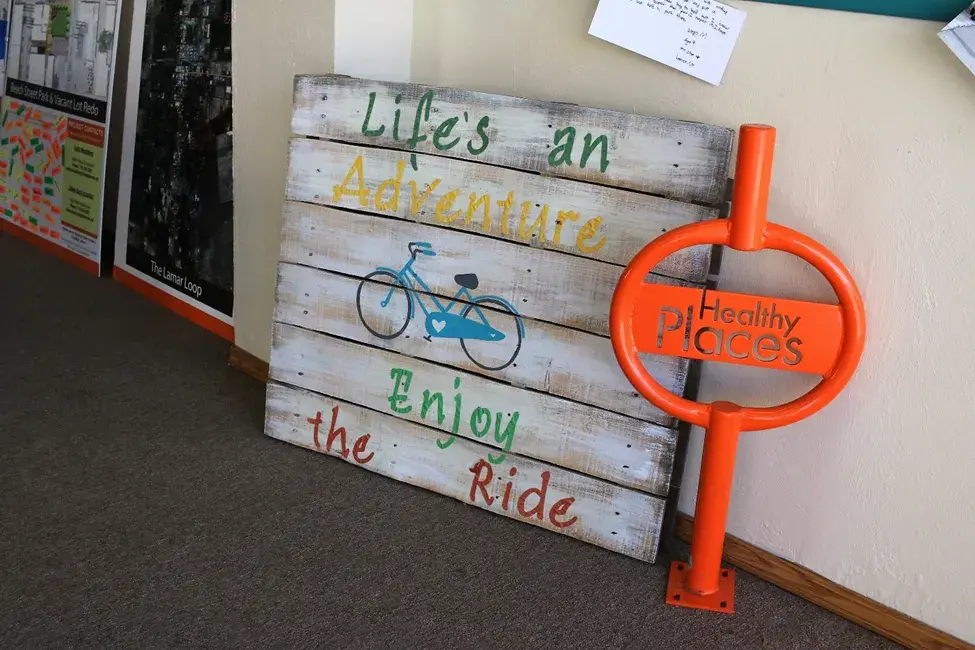Over the past two decades, the way we think about the places we live and their impact on our health has evolved. Developments in the urban planning and public health sectors have driven this evolution, along with a growing awareness of how various social and environmental factors affect health.
We now accept that where we live can matter greatly to our well-being. There are many circumstances at play that either help or hinder our attempts to live physically active and socially-engaged lifestyles. Our ZIP codes, as we’ve all heard, determine our longevity in many ways.
More and more small towns, neighborhoods and entire cities are coming together to remake themselves into places where health is a priority. The Colorado Health Foundation has a long history of supporting these efforts, and we continue to do so as part of our new Strengthen Community Health focus area.
Back in 2012, we launched Healthy Places: Designing an Active Colorado, an initiative that lets Colorado communities design and carry out their own plans to promote physical activity and improved health.
In partnership with the Urban Land Institute, we support communities in their own efforts to improve the built environment, which refers to any human-made surroundings (buildings, parks, infrastructure, etc.) outside of the natural environment. The neighborhoods and cities that participate take a community-informed approach to transforming the places where residents live, work and play.
During the initiative's first cycle, multiyear funding was awarded to three Colorado communities – the Westwood neighborhood of Denver, the suburban city of Arvada and the rural city of Lamar. Each community completed several projects over three years that reflected their unique assets and needs around health and physical activity.
Initially, Healthy Places primarily focused on promoting physical activity by improving the built environment. Today, however, we focus on the fact that a community’s health is driven by many factors beyond having better parks, infrastructure and recreation spaces.
There is a critical need to recognize and address the interplay between a wide range of other contributing factors to our health, including access to quality health care; safe, high-performing schools; the availability and location of good jobs; and active and inclusive engagement of residents by local governments and community organizations.
Last year, the Foundation announced a funding opportunity to kick off the second cycle of our Healthy Places initiative. It reflected our new cornerstones and an explicit commitment to this widened view of what communities need to be healthy.
Four communities received initial grants to develop project recommendations with the help of the Urban Land Institute. After submitting these plans for review this past summer, the same four communities were each recently awarded an additional $1 million grant to bring their projects to life over the next three years.
The new communities, along with the involved organizations involved and project ideas, are:
- Colorado Springs – El Paso County Public Health and the RISE Coalition are working together on a community plan that targets Southeast Colorado Springs. Among their identified projects is the creation of a community center in what is currently a semi-vacant shopping center.
- Commerce City – Commerce City, a suburb in northeast Metro Denver with 55,000 residents, will carry out a series of healthy eating and active living projects in partnership with the nonprofit organization Cultivando. They will focus their efforts on boosting engagement among the City’s Latino community.
- Greeley – The City of Greeley will use part of their grant to fund significant improvements to four parks in and around the isolated East Memorial neighborhood. Design concepts will be determined by collaborating with the neighborhood’s community members.
- Montbello – In this northeast Denver neighborhood, the Montbello Organizing Committee will lead efforts to establish a community cultural hub with the aim of reducing health disparities. In addition to physical activity, another priority is to increase access to healthy and fresh food options in the neighborhood.
We are both humbled and inspired by all of these communities who are now a part of Healthy Places and their journeys to bring health in reach across Colorado. The changes they undertake and the lessons they learn will provide valuable examples for us all, no matter where we live. Going forward, we will be sharing updates about these projects on the Foundation’s Healthy Places webpage.

